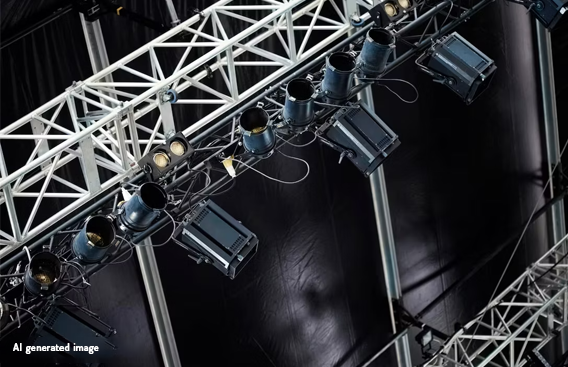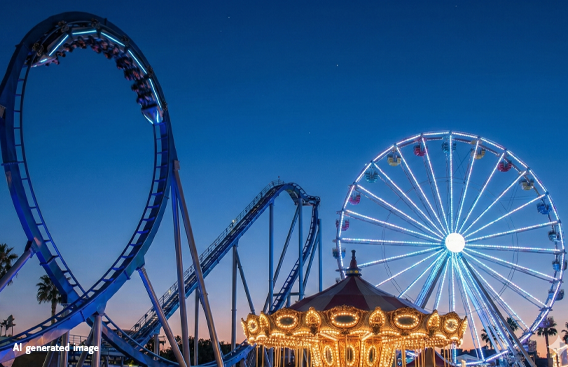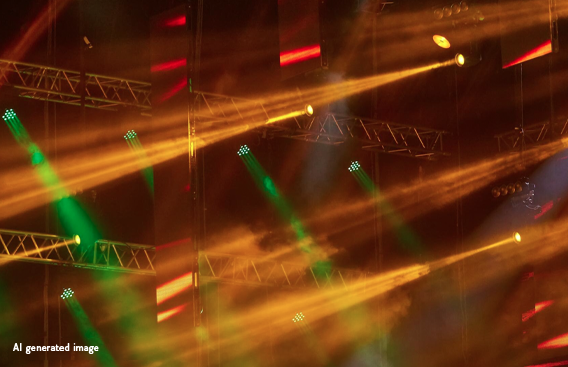Increasingly creative demands from performers, producers and audiences mean shows are becoming more thrilling and exciting all the time. Pushing the limits of artistic expression and mechanical capabilities means an increased need for sophisticated safety systems that can keep pace with the action on and off the stage. Rob Sharrock, Safety Business Manager from Siemens Industry Automation & Drive Technologies, discusses the innovative future of stage performance safety.
Stage shows, concerts and even traditional pantomimes are becoming increasingly action-packed delivering a full, sensory experience which brings music, dance and words to life. Most of us will have been to a show where a performer flies across the stage or the stage rises towards the ceiling. As these types of spectacular acts become the norm, the performing arts industry finds itself facing a balancing act between delivering extravagant performances and ensuring performer and audience safety.
Innovative or dramatic performance brings with it real safety considerations for producers and performers alike. With lives ‘at risk’, safety failures are not an option, so investment must be made in the latest safety technology – which not only allows performers and stage crews to push the limits, but to also remain safe at all times.
Crucial in any automated safety system designed to protect artists is the PLC. The S7400 FPLC from Siemens is an example of the type of component which can ensure all measurements and settings within the system are accurate. It features two sensors to cross check measurements, and makes sure that if a distance is too far or a motor is going too fast, the whole system will immediately shut down via a dual braking system on the motor to ensure the safety of performers and audiences at all times.
In addition, SINAMICS S120 drives from Siemens feature integrated safety monitors and encoders which detect any faults and stop the system in a safe state. It is also important that any safety data which is used through the system is transmitted efficiently, securely and reliably, so for this reason utilising technology such as Profisafe over Profibus to protect the data being sent and received is recommended.
It is also vital that any automation system is self-checking to highlight any discrepancies or issues before they become a fault in use, when they could potentially cause an injury.
Siemens works with HMK and Stage Technologies to design systems which not only respond to the challenges of creative briefs, but also feature the latest safety technology to protect both the performers and the audience.
Every new performance presents a unique set of challenges when developing the automation systems required to meet the demands of increasingly complex stunts. For example, one of the latest shows HMK and Stage Technologies were involved in used Siemens equipment to fly pop star P!nk the length and breadth of a stadium, including over the heads of all the audience with as few restrictions as possible. This meant the system needed to be ‘plug and play’ and fit into many different-sized arenas as it was used on an international tour.
Another production all companies have been involved in is KÀ by Cirque du Soleil, which features over 200 axis of automation and has set new standards in the theatrical industry. Of particular note is the opening stage featuring two automated platforms which rise up from a huge void.
While the trend for more dynamic performances has increased in the performance industry, there have been some key trends in the technology needed to support these types of performances which has underpinned a drive towards ever more elaborate and impressive shows. For instance, many hardware innovations are now being driven by the emergence of cutting-edge software technologies, including wireless systems and touch screen interfaces.
Smaller venues and events have increasingly been able to benefit from the added value that sophisticated automation brings to a performance as such systems become more cost-effective and rental opportunities have opened up the accessibility of these types of technologies further.
The standardisation of automation available for performance has also been highly influential on the industry. Many venues have harnessed the opportunities available to create awe-inspiring performances using standard off the shelf equipment.
Our work with HMK and Stage Technologies suggests that an increasing number of venues are using a regular list of familiar equipment to create individual shows, avoiding the associated costs and complexities of specifying bespoke, one-off systems for every show.
Another area of advancement which will have a significant impact on system design and the connectivity of systems is the wider adoption of an Ethernet infrastructure and data protocols. Combining databases and efficient network topologies will allow a wide range of equipment to operate on the same network, providing an efficient automated control system to deliver safety-driven features.
As much as the latest technology can help in assuring the safety of performers and audiences, ultimately there is always room for human error. That is why, as the use of sophisticated automation systems increases in the performance industry, it is vital that there is a focus on education to drive quality standards across the sector, and ensure the training and education available to operators keeps pace with the technological innovation. Wherever possible, we support companies like Stage Technologies, which is very actively involved in country-wide training programmes and guidelines such as the National Occupational Standards.
The often challenging nature of the creative briefs we receive leads us to think that the next ten years will be a significantly dynamic and innovative period for the theatre automation industry. With the move from a niche market to mainstream entertainment increasing, automation suppliers and integrators need to ensure they are best-placed to respond to the growing demands of performers and producers looking to push the boundaries even further. However, it is crucial that this need to break down barriers in the world of performance is not at the expense of the safety of performers and audiences. Investment and research and development needs to continue to ensure the safety systems can match the demands placed upon them.
[Siemens – original article]



